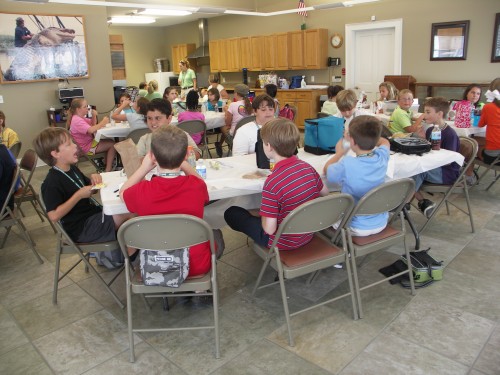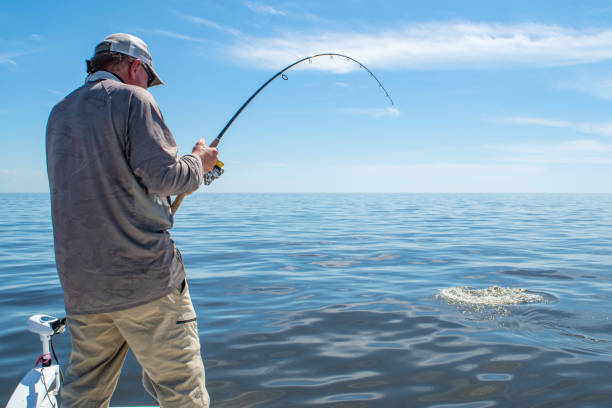New BP claims centers open throughout Tri-parishes
June 12, 2012Terrebonne school board protects self in realignment plan
June 12, 2012More than 30 middle school students from across the region began a summer camp experience this week, but for these explorers, it is not about adopting silly names, playing games, roasting hot dogs or arts and crafts.
Participants in the South Louisiana Wetlands Discovery Center science camp are focused on conservation and restoration of Louisiana’s marsh and coastal areas. Even though they are out of school for the summer, some might be surprised at what they can learn without trying.
Campers participate in multiple activities through field trips and hands-on experiences designed around scientific lessons. These week-long day campers are also instructed about the region where they live and what they can do to make it a better place.
Science Camp Contents
“This is our fourth year having summer camps,” South Louisiana Wetlands Discovery Center Education Director Leah Gautreaux said.
SLWDC camps are divided into three general levels that range in activities from basic biology to participating in actual marshland restoration projects.
The first two camp levels divide participants in middle school (third through ninth grades) in lower and upper grade ranges, while the third level is comprised primarily of highschool students.
The level-one camp (third and fourth grades) is informational in nature. Here participants learn things like what a wetland is and what is involved with being part of an estuary – as is Terrebonne Parish.
The level-two camp (fifth through ninth grades) takes on more detailed activities such as dissections and biological research. “These are middle school kids,” the education director said. “Most kids don’t get to see a dissection until they are in high school.”
Level-three participants are mostly high-school students that go to work in actual coastal restoration projects. The level is not limited to a specific age group, as anyone who completed level two is eligible to participate. Their activities include planting marsh grass and building land areas.
“We have some kids that do levels one, two and three every year,” Gautreaux said. “If they are still having fun with it, they are not too old. We have had some kids come back and help set up camps.”
SLWDC participants take daily field trips to plant and wildlife refuge areas, the USDA sugar cane research farm, the Bayou Terrebonne Waterlife Museum and other venues where they experience what is involved with living in a wetlands region.
“We do activities like dissecting frogs, we teach them how to build their own watershed, we do oil field simulations and examine how to do restoration projects,” Gautreaux said. “For our level-two [conservationist] camp last year, we had them come up with products made of items they collected during the week. It had to be something marketable. They had to come up with a commercial for it and it had to be useful. It couldn’t just be something pretty on the wall.”
This year, summer camp participants will create filters that might be used to protect wetlands. “They are only allowed to use natural materials,” Gautreaux said. “They are not allowed to use anything manmade. Of course it is going to be a competition with the one that comes up with the cleanest water winning. We will come up with some kind of prize.”
A science and physics teacher at Terrebonne High School, Gautreaux, along with other camp leaders who are also professional educators, offers a presence of instruction contained in each activity – even if participants do not realize they are learning something.
“We had about 50 kids in our level one camp last year,” Gautreaux said. “It helped demonstrate how we need a place of our own.”
“These kids really absorb information,” SLWDC Executive Director Paul Guidry said. “You’d be surprised on a Friday afternoon the amount of information they actually pick up in a week.”
Registration for the camp is conducted through public schools and carries a fee of $150. Parents have responded and want their children involved.
“My mom signed me up for it and I really didn’t want to do it,” camp participant Whitney Amedee said. “But I came and found out it was actually fun. We got to feel different animal skins and learn about them and how to test water.”
“It is really fun,” Grant Williamson said midway through the first day of camp. “We are learning about the native species of plants in southern Louisiana. We got to see some fur pelts of animals and got to learn about native fish in the area and Gulf of Mexico.”
T. Baker Smith CEO Kenneth Smith is among a list of corporate leaders that participates in the SLWDC camps.
“We take the kids around and show them what we do and how everything from engineering for a levee to all the other things we do is tied to the environment,” Smith said. “We show them how industry and the environment can work together. And it is a lot more fun to spend a day with the kids than what we normally do a lot of the time.”
“We would like to, at some point, cater to kids that are less fortunate and whose parents might not be able to afford the $150,” Gautreaux said. “Most of the kids that do our camp can afford it and it is a lot of bang for the buck.”
Organizational Background
The SLWDC began as a project in the 1990s with the Houma Downtown Development Corporation. In 2002, it broke off to form its own specialized group.
The bulk of SLWDC activity comes in offering programs including the summer camps, sponsoring the annual Wetlands Youth Summit for high school students, and presenting both spring and fall nature trail events at the Mandalay National Wildlife Refuge.
Building for Future
The SLWDC currently rents office space and is provided work space from the Terrebonne Folklife Culture Center at 317 Goode St. in Houma, but is making plans to open its own facility once it has secured money for that project.
In 2004, the SLWDC entered into an agreement with the Terrebonne Parish Consolidated Government to be able to build its own facility on 2.5 acres behind the Houma-Terrebonne Civic Center. All the group needs to do is raise $4.5 million to construct the center for exhibits and working space.
“We have been working since 2004 to secure funds,” Guidry said. “Since then we’ve had hurricanes and the economic crash that set us back a little bit.”
In 2008 the SLWDC received a state commission and now operates as a 501(c)(3) non-profit organization with a local board of directors.
“We are going to apply for federal and state grants [to finance construction of a center], but we are mostly dependent upon individual donations,” Guidry said.
Guidry said the organization’s plan is to expand beyond educational opportunities for youth and include programs focused on adults, possibly beginning in 2013.
The basic purpose of the SLWDC is to educate participants regarding coastal restoration and wetlands issues.
“Our philosophy is if you get them young enough, they will grow a passion for [the coastal wetlands],” Guidry said. “Maybe one day one of them will come up with a solution to save our coast, and we can keep our lifestyle.”
“We take our area for granted,” Gautreaux said, responding to public response levels to wetland concerns. “We think it will always be here because it always has been.”
Guidry said that the purpose of the SLWDC is to educate the public, starting with younger generations, to develop a passion for the Louisiana coastal areas and carry the message of this region’s importance to the rest of the nation forward.
“We want them to be advocates for the wetlands and get their parents involved,” Gautreaux said. Just be careful, she joked, and don’t let the campers know they have learned something.
Lunch is a daily activity but far from the highlight for participants in the South Louisiana Wetlands Discovery Center science camp. Level-one participants spent Monday learning about area wildlife and the part they play in the coastal ecosystem of Terrebonne Parish.












